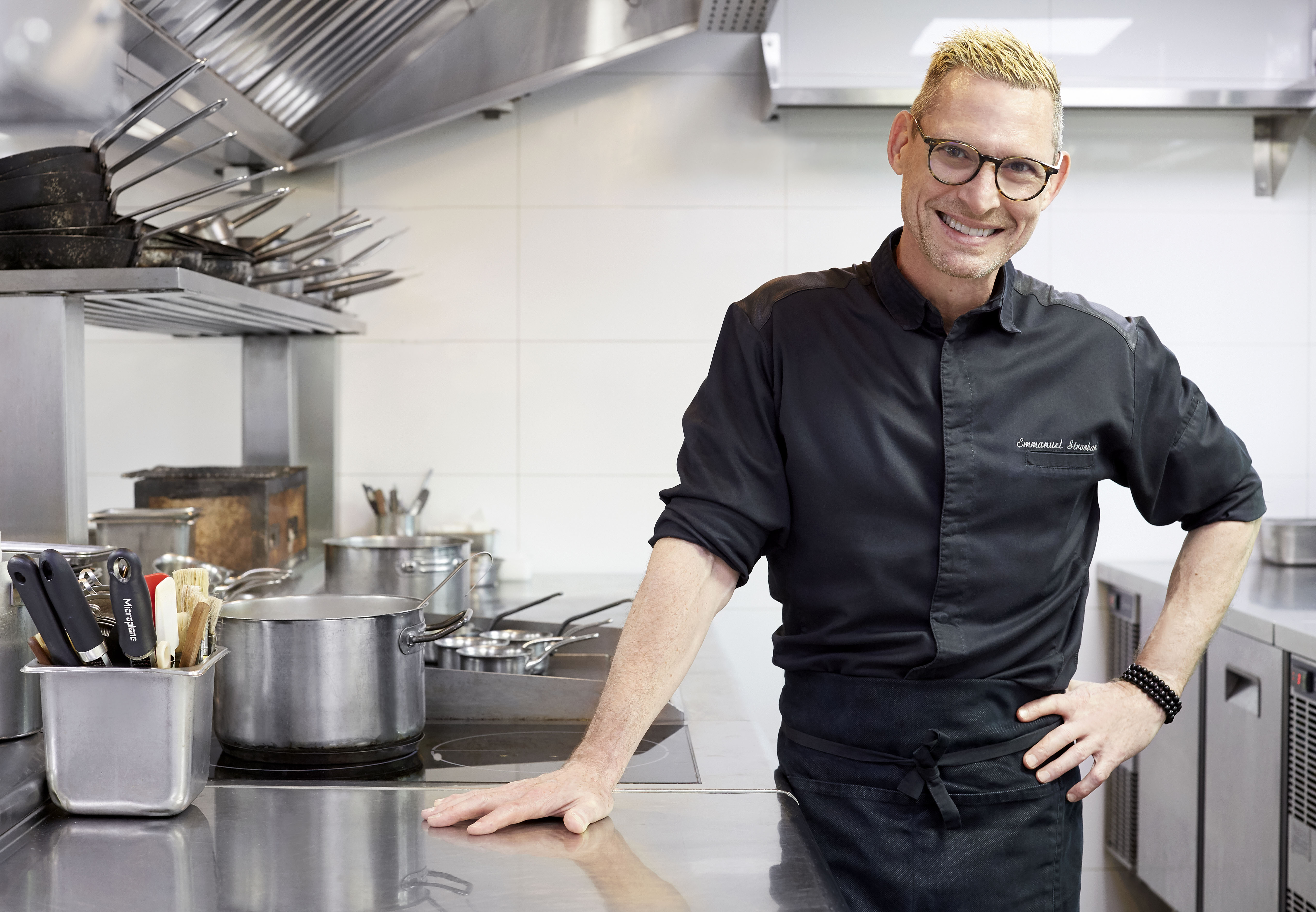EHL Hospitality Business School is a leading hospitality university with locations in Switzerland and Singapore. EHL’s Institute of Nutrition Research & Development is conducting a series of interviews with world-renowned chefs to explore the current challenges and future innovations in their field. The third in this series of interviews is with Belgian-born awarded Chef Emmanuel Stroobant. His restaurant, the Saint Pierre, is a contemporary French establishment with a history of fine dining excellence since 2000; the cuisine is guided by Stroobant’s philosophical approach to simplicity and quality of produce.
Mindful eating
Michelin-starred chef Emmanuel Stroobant has been running a thriving food and beverage business in Singapore for over 20 years. However, it was his early years growing up on a farm in Belgium that sowed the seeds of his approach to cooking and insistence on using fresh, natural and seasonal ingredients.
Admittedly, he says, the practice of eating well can be a challenge to execute for casual restaurants, where customers typically want hearty portions at affordable prices. Preparing food from scratch using fresh or organic ingredients tends to be more expensive and time-consuming than opting for processed foods. Access to quality ingredients may also be limited in different parts of the world.
Another challenge is the interruption to the mealtime ritual. It’s not uncommon for people to eat while scrolling through their phones or watching television. Distracted, mindless eating can often lead to negative health consequences, such as obesity, indigestion and lower metabolism, especially when the food is high in trans fats and sugar.
Stroobant, who lowered his cholesterol level when he became a vegetarian in his 40s, is on a quest to share the benefits of mindful eating, an approach that focuses on maintaining a thoughtful presence and awareness of the food you put in your body, and simply paying attention to simple things like eating slowly.
Gourmet ingredients = High-end dining
Stroobant acknowledges that it is easier to serve quality produce at his Michelin-starred restaurants: Saint-Pierre, a modern French restaurant with an Asian accent, and Shoukouwa, an Edomae sushi restaurant. Both establishments are located at One Fullerton in Singapore.
Having developed close relationships with a network of growers and producers in Europe and an exclusive buyer source in Japan, both restaurants spare no effort in transforming these ingredients into gastronomic experiences for their diners.
“The Michelin stars keep us on our toes,” Stroobant explains. “It’s a lot of pressure, but it is our duty to make sure that whatever we deliver is a high standard of quality.”
Kitchen tours: An insider experience
At high-end restaurants, it is easier to raise a guest’s level of food consciousness as fine dining lovers tend to have a natural curiosity about the provenance of the ingredients. At Saint Pierre, Stroobant conducts kitchen tours for diners who are keen to see how he and his team of chefs work.
For serious foodies, he encourages them to come back and spend anywhere from two hours to a full day in the kitchen. The benefits go both ways: his team has an opportunity to demonstrate the passion and respect for the culinary craft, and customers learn what it takes to prepare a fresh, delectable dish.
“It really works like magic for us. These days, my clients are looking more for an experience, something that money can’t buy.”
Food origins and stories
Gastronomes are not just drawn to the chefs fronting fine dining restaurants but, increasingly, the stories of the artisans behind the produce. Hence, restaurants should also differentiate themselves by sharing the origins of their signature dishes and ingredients. Stroobant reveals that he recently collaborated with a friend who imports Chartreuse from his home village in Grenoble. His friend approached his restaurant guests and regaled them with the story of how his grandmother collected herbs that make up the ingredients of this popular French liqueur.
“What do chefs have that they can give to somebody else?” Stroobant asks. Answer: “Their own background, family story and history.”
Make meatless meals tasty
As a vegetarian, Stroobant has heard this common refrain by naysayers that a meatless meal isn’t tasty. He begs to differ. At a recent conference talk in Geneva on vegetable proteins, Stroobant suggested that the food industry look to other parts of the world for flavour options if they want more people to go meat-free and reduce the impact of animal agriculture on the environment.
India and China use many spices that not only tantalise the tongue but also have health benefits, such as turmeric. In Japan, dashi, sake, mirin and soy form the foundation of authentic Japanese cooking. These four staple ingredients alone build the solid base for many dishes that omakase restaurants like Shoukouwa.
“To create flavour,” Stroobant advises, “look to others who have been doing this for centuries rather than reinventing the wheel.”
Under his culinary leadership, the Emmanuel Stroobant Group also runs additional restaurant concepts, including two Michelin-starred Shoukouwa Sushi restaurants, Kingdom of Belgians, SQUE Rotisserie & Alehouse, Mycelium Catering and Star-Chef Academy.





